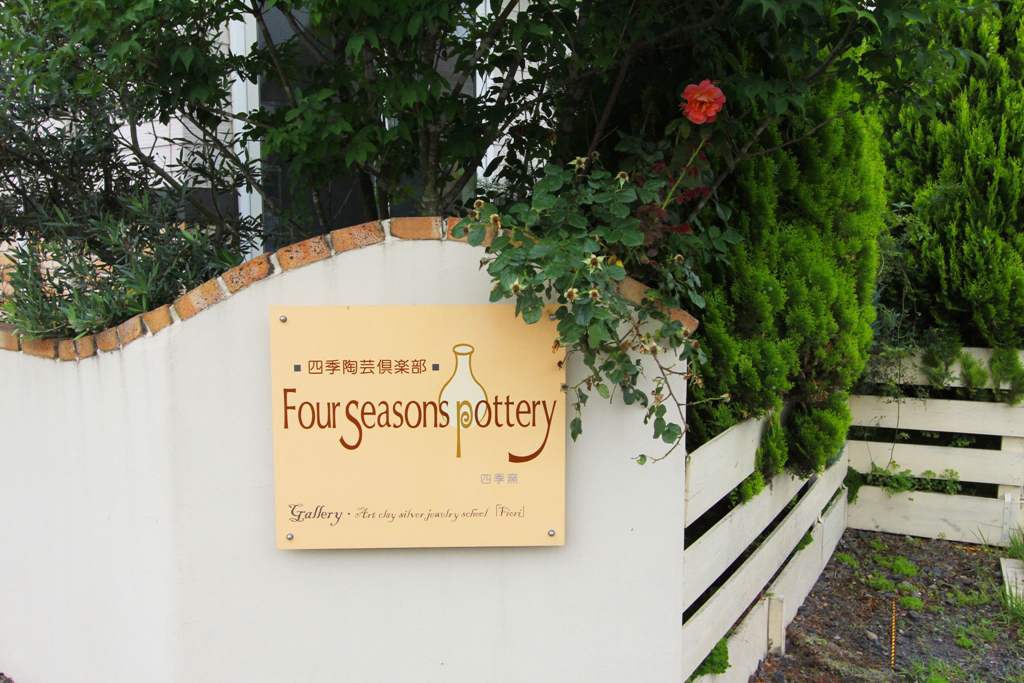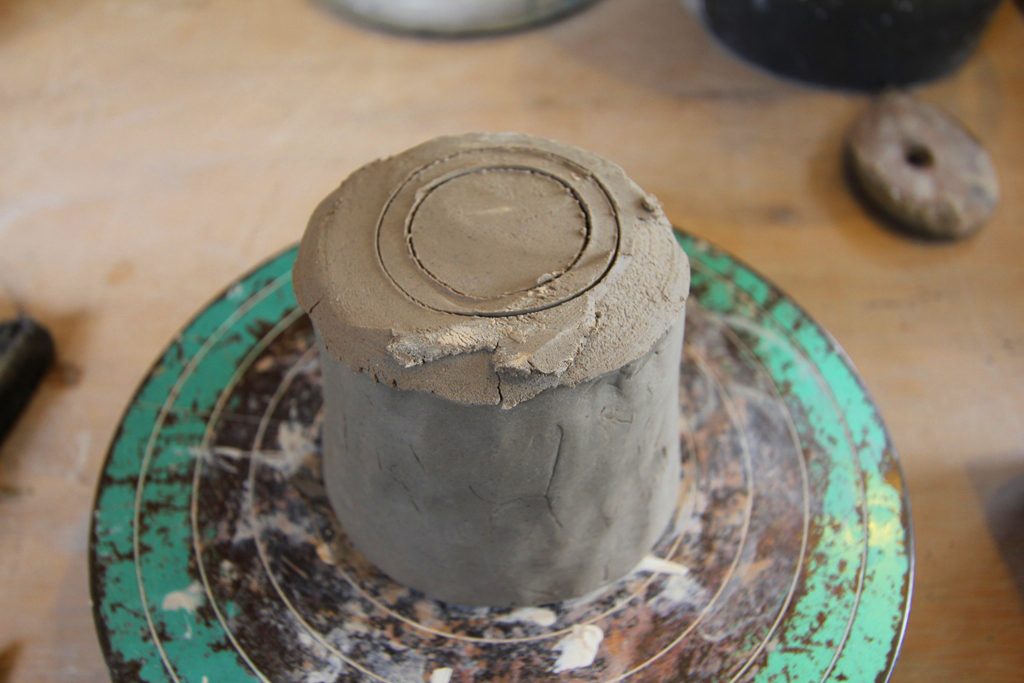зБЂжЫЬжЧ•, 8жЬИ 2nd, 2011...8:29 AM
Pottery Artist Junko Yamamoto data collection
Reading time: About 7 minutes
Pottery Artist Junko Yamamoto data collectionThis time in collecting data based on JapanвАЩs oldest most historic pottery, I went to Junko YamamotoвАЩs studio in Gunma prefecture Oota city.
Miss YamamotoвАЩs studio
Gunma prefecture Oota city where the studio is located is 2.5 hours away from Tokyo by train. Located in the border between Gunma prefecture and Tochiki prefecture, it is surrounded by nature, and is rich with a relaxed atmosphere. It is said that those who live here once, cannot live in Tokyo.
Junko Yamamoto
Miss YamamotoвАЩs personal exhibition has been opened a number of times in Japan, but this May she has opened a personal exhibition in New York ChelseaвАЩs Cavin Moris Gallery, and in the past has opened in Italy as well. (Cavin Moris Gallery has been open for 27 years and is a long standing top gallery in New York. Starting with Japan, it is said that they have a large collection of pottery work from Asia. https://www.cavinmorris.com/пЉЙ
I felt that Miss YamamotoвАЩs work is different than the other Japanese pottery IвАЩve seen. It has very unique work, and I wanted to see more of her works. I also felt a very warm feeling as well. Here I will introduce a part of her works in these pictures.
These works imaged the surface of the moon.
Miss YamamotoвАЩs works
Miss YamamotoвАЩs works are not the traditional Japanese pottery, her work consist of a combination of feelings of other countries she absorbed with the concept of вАЬJapaneseвАЭ.
Miss Yamamoto started going to pottery school when she was 18, and went on an exchange program to New Zealand, then studied abroad in Italy after graduation, has met a variety of amazing things while venturing over 20 countries, and has created her very own style in the midst. Especially, ancient Greece, and the dishes of Egypt and its forms seem to be a big influence on Miss Yamamoto. She also mentioned that another important aspect that helps form the core of her works is the experience she had training at pottery artists Roy & Pat Addison while she studied abroad in New Zealand.
This time she also informed us with her experiences in America and abroad. In America it is said that for a Potter to create a career they either need to open an personal or group exhibition at a top gallery. About 2 years ago Miss Yamamoto had opened a small personal exhibition in Brooklyn area, which was the connection that led her to open a personal exhibition. Also in New York and in Switzerland there is a вАЬArt FairвАЭ that is opened where buyers with good eyes for paintings come to the gallery booths to purchase works. What is important there is вАЬUniqueness of worksвАЭ. Good quality is said to be sold out in an instant. It does not matter whose work it belongs to, the buyers are exclusively looking for the best of the best. Also it is part of their status to donate those works to museums as well. (There seem to be a pattern where the buyer will put a time lag before donating). This is how, new artists are developed in other countries.
Based on pottery:
She orders the dirt used for pottery from Mashiko and Gifu, and blends a variety of them together. I had thought that water was also important, however she does not have a preference with water. Clay seems to be available all over the world. Therefore, pottery is done all over the world.
Each work takes about 3 weeks, if in a hurry can be done in 2 weeks. It takes 4 days to make the shape, 1 week to dry, unglazed firing (700celsius), paint glaze, and glost firing (1200celsius); this is the trip.
In her busy schedule she offered to provide us information, and at the same time worked on her pottery as well.
Miss Yamamoto working
Also Miss Yamamoto is the representative of вАЬйЩґismвАЭ https://touism.p1.bindsite.jp/, a place for young pottery artists to come together from all over Japan, where those in making and using of the pottery come to a hall where the galleries and shops interconnect with each other, sharing their feelings towards pottery and plates in a very realistic way. She is also involved in a project that began in 2010, where she contributes to the power of bringing the spirit of JapanвАЩs pottery world. This project is held mainly in Mashiko, over in Gifu there is the project called вАЬIkeyanвАЭ https://www.ikeyan.jp/ , and she is using two of these large forces with the power of the young generations to up bring JapanвАЩs pottery.
The group exhibition that Miss Yamamoto will also be participating in the вАЬйЩґismвАЭ, will be held in Shinjuku Isetan from July 20th 2011 (Weds) to August 2nd (Tues), for those who are interested feel free to come by.
To our surprise afterwards, Miss Yamamoto let me experience pottery on her goodwill. This was unexpected therefore I was a little nervous. We were allowed to make a cup which is known to be the easiest.
First you make the clay into a mountain. And then, you start to make shape of your cup by slowly creating an open space from on top of the mountain. I was told to make the thickness about 1cm when doing this and this was rather difficult.
Making the cup.
However it seemed very bad, that Miss Yamamoto was nice enough to fix it for me.
Afterwards, we start making the inside flat with a stone spatula, and clean it up to make it easier to drink from the spigot. After that is done the spigot is dried with a dryer and then made so it will not stick when turned inside out.
After turning it inside out, we put two lines in the center, and we sharpen the outer side of the outer line, and the inner side of the inner line. I was worried whether I would make a hole, but as a matter of fact it was pretty okay to use strength. However, to sharpen it evenly was rather difficult.
The bottom where the lines are
The cup where the bottom is sharpened a little
Making the shape is done now. Then our pottery experience ended with choosing our favorite colors. I decided to choose a brown-ish color. I am excited to see what the finalized cup will look like.
The color chart
In Miss YamamotoвАЩs studio вАЬFour Seasons Pottery ClubвАЭ, there is a one day pottery experience and a lesson held 3 times a month; for those that are interested feel free to try it out.
гАА
Mail : potter-j@nifty.comгААTel : 0276-48-1212гАА
Web : https://homepage2.nifty.com/potter-j
The clay that is used for pottery is said to have a heart calming effect. I very much enjoy the cool feeling of the dirt. If there is a chance, I recommend trying to experience pottery at least once. It is said that once you get hooked on it itвАЩs hard to come out.
Junko Yamamoto Career
Miss Yamamoto was born in Fukui prefecture, and began pottery when she was 18 going to pottery school. While going to school she studied abroad at a studio in New Zealand, received apprentice of oneself, as their first and last, from the married pottery artists Roy & Pat Addison. After graduating she became a full time worker at вАЬKOKONOTUIDO Inc.вАЭ in Yokohama, and was in charge of designing the pottery. In 1998 she studied abroad in Italy/Firenze at a pottery studio. From that time, she observed the world heritages and museums, wandered around over 20 countries to find her own style. Amongst her trip she would keep all of the things she would be touched by thought as beautiful from the bottom of her heart, and constantly continuing to make works, and created her own style. She especially was into Greece BC, Egyptian forms of dishes, the Japanese worn out works called вАЬWabiвАЭ in, old broken buildings, prefers the beauty that comes from the old worn out tinged things. She takes that and collaborates with the modern and stylish feeling, and created her very own beautiful works. Until now, she has held personal exhibitions, also, goes to Italy as well. In 2011 she held her personal exhibition in New York for the first time.


































1 Comment
8жЬИ 3rd, 2011 at 3:08 PM
I enjoyed this post of yours. I would like to try someday to do pottery.
Miss Yamamoto’s work I find it very interesting and unique. I loved the way she printed her personal touch on her art and indeed it doesn’t seem like anything else I’ve seen before.
Leave a Reply